Matador Network's Blog, page 144
July 18, 2024
Norwegian Cruise Line To Launch Cruises From Philadelphia in 2026

Big-line cruising is coming to Philly in 2026. Norwegian Cruise Line announced this week that the Norwegian Jewel will launch cruises departing from the SouthPort Marine Terminal Complex in Philadelphia and calling on Bermuda’s Royal Naval Dockyard. Itineraries will last seven to nine days, with the first departure on April 16, 2026.
“We remain committed to delivering more experiences for our guests to create unforgettable memories, so they can vacation better with us,” David J. Herrera, president of Norwegian Cruise Line, said in a press release. “We are particularly proud to partner with PhilaPort to launch cruising in the area, making it even more accessible to the U.S. Mid-Atlantic region.”
The announcement came as part of Norwegian’s expanded lineup for the Spring/Summer 2026 season, which will see the company call on ports in 30 destinations across the Americas and Caribbean. The Philadelphia cruises stand as the first commercial cruises to depart from the city in more than a decade, even as Philly remains an iconic American travel destination for those seeking history, sports, or live music.
Passengers seeking more information can visit the dedicated page on Norwegian’s website for trip dates and costs for specific departures. Pricing starts at $1,197 per person, with free airfare offers for second guests standing as a current special available to early bookers.
“The Port of Philadelphia is extremely excited to partner with Norwegian Cruise Line, one of the world’s premier cruise lines,” Jeff Theobald, executive director and CEO of PhilaPort, said in the release. “Philadelphia has so much to offer, as the birthplace of freedom and the home to much of our nation’s history, we look forward to connecting cruisers with our world class city. This new service rounds out the portfolio of services offered at PhilaPort, and we look forward to this next phase of growth.” 
This App Is Making It Easier for LGBTQ+ Cruisers to Connect During a Sailing

Meetmeonboard, a website that’s been helping LGBTQ+ travelers meet up during sailings with major cruise lines, as well as book chartered cruises with LGBTQ+ cruise lines like Vacaya, Brand G, and Daddy Cruise, now has an app. Since June 3, 2024, Meetmeonboard is available for download on your phone for free via the Apple App Store.
Thanks to the app, LGBTQ cruisers can book cruises on most of the big cruise lines out there and see the number of other Meetmeonboard users who have done the same. Users can also visualize which cruises are the most popular among Meetmeonboard users and opt to book the same voyage if they wish to do so. Currently there are more than 500 cruises available for booking on the app.

Photo: Meetmeonboard
Right now, the app has a Community section where users can ask a myriad of questions about the app and the cruises available for booking. They can also use the Resource section to find people who are booked on the same cruise as them, or even find people to share a cabin with. Soon the app will be updated to provide users with the ability to chat with each other and a cabin-sharing feature will be added, explains Adam Martindale, owner of Meetmeonboard, during an interview with Travel Pulse‘s Paul Heney.

Photo: Meetmeonboard
The Resource section of the app provides users information about the cruise lines, especially how inclusive they are so travelers can make informed decisions about their trips.

Photo: Meetmeonboard
“We are nearing 1,000 registered users, with over 500 cruises joined. We are early in the process of getting the word out, but we believe the app will grow organically by word of mouth as more and more LGBTQ travelers discover it,” Martindale says.
The goal of Meetmeonboard is for LGBTQ+ cruisers have a space to develop a community where they can find travel companions, make new friends, and even plan events, meet-ups, or trips together. 
July 17, 2024
Travel Expert Bruce Wallin on the Pros and Cons of Modern Travel’s Luxuries
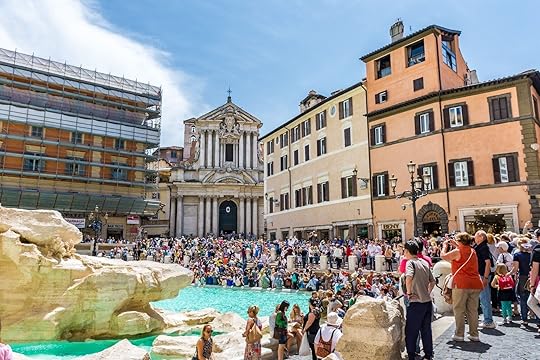
Luxury travel is designed to take the friction out of seeing somewhere new. Yet it can be all too easy to fall into the catered amenities, never leave the resort or designated activities, and return home without any real sense of the place.
That doesn’t have to be the case. It’s something that Bruce Wallin knows well.
Wallin has a couple decades of experience working in travel media. In his 20s, he started a magazine out of his garage called Trip Magazine centered on backpacking. He then moved to Robb Report, where his focus was on luxury travel. Today, he has a podcast called Travel That Matters and is an executive at the media company North & Warren.
There’s a common misconception “that luxury travel removes you from real authentic experiences,” Wallin says on the Matador Network podcast No Fixed Address: The World’s Most Extraordinary People. In a wide-ranging conversation with Michael Motamedi and Vanessa Salas, Wallin discussed the changes in travel that he’s seen over the years and how, as with all types of travel, the trip is what you make of it.
Coming from the backpacker world, Wallin admits, he loves the spontaneity of things like bumping into a stranger on the street and making fast friends. Luxury often equates to a certain level of seclusion from the day to day of people who call a place home, however. Doors are opened that otherwise wouldn’t be. Putting yourself out there and making an effort to connect can still lead to those authentic experiences — whether that’s communing with a local guide or mingling with high society at a grand hotel bar.
Wallin recalls a trip to Lima staying at Hotel B. The bar was filled with locals, and “I was drinking a pisco sour and just feeling like I was part of high society in Lima,” Wallin says. There are advantages to both luxury trips and spontaneous budget trips when you approach it right and find a way to see a slice of life in an area. “No question about it,” he adds.

Photo credits: Bruce Wallin, left; Yann Allègre, right
What’s considered standard today would have been a major luxury not so long ago, though. Even compared to a decade or two ago, travel is incredibly seamless. The friction of things like language barriers, paper maps, and scrambling to find a hotel or a ride have all been lifted by what our phones can do.
“When I really started traveling a lot, not everybody spoke English,” Wallin says. “You’d go places and people would not speak any English and you had to figure it out. And now, everywhere I go, people speak really good English.”
In some ways, that’s great,” Wallin continues. “If I’m lost in China somewhere, it’s really nice that I can find someone who can help me out. But in some ways, I feel like you’re missing out on an experience in that regard.”
There are obvious benefits: travel is much more accessible, affordable, and in many ways safer for everyone. The drawbacks include overtourism, with cities like Amsterdam aggressively trying to cut back the number of visitors. The rush to a viral photo spot easily flattens the appeal. Sometimes it’s not too hard to wonder if some places should be a little less accessible.
To hear more about Wallin’s life in travel, why travel is important for children, and the kindness of the people we meet when we’re somewhere new, listen to the full episode on your favorite listening platform. 
The Best Spots to Camp on the Beach Along the US West Coast
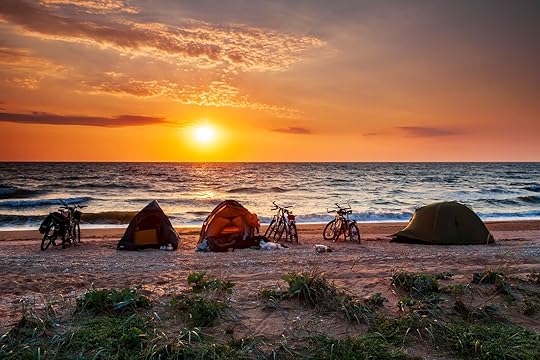
Dreaming of driving along the West Coast with your window down, hair blowing in the ocean breeze, and pitching a tent along the way, but you haven’t committed because the logistics are just too annoying to figure out where the camping beaches are at? Well, you no longer have an excuse. This list maps the campable beaches along the West Coast from San Diego, CA to Bellingham, WA, worth checking out.
We hope you love the spaces and stays we recommend! Just so you know, Matador may collect a small commission from the links on this page if you decide to book a stay.
Southern California
Photo: Pictor Pictures/Shutterstock
Leo Carrillo State Park in MalibuA stunning beach camping spot just north of Malibu proper. For the photographers reading, this park is well known for the beachside caves you can explore and photograph sunset from within.
Cost: $45Funny comment: “I loathe to rate this 5 stars because I don’t want anyone else finding out about it and the rates to increase anymore (I’ve seen them go from ~10 bucks to $60 a night) and availability to greatly decrease. So please don’t go here . Also, the critters in the tide pools have mostly been picked, as it’s pretty barren compared to what it once was, so if you do go, please don’t touch anything.” Evan AldrichCrystal Cove State Park in Laguna Beach
. Also, the critters in the tide pools have mostly been picked, as it’s pretty barren compared to what it once was, so if you do go, please don’t touch anything.” Evan AldrichCrystal Cove State Park in Laguna BeachCrystal Cove is a 3.2-mile-long beach in Laguna Beach that can provide a sanctuary from the hustle and bustle of the Los Angeles area. Since campsites are not on the beach, these coastal campsites are often not booked out months in advance, so Crystal Cove is perfect for any last-minute arrivals.
Cost: $25Funny comment: “Honestly, all there is there is sand and water, and clean bathrooms without any needles. Ok, it really is a 5-star place, but I want to keep it for myself. Don’t hate.” -Robert RogersSan Elijo State Beach in EncinitasIf you are a surfer, this is a must-stay because you are centrally located in all the north county surf spots of San Diego. If you are not a surfer, San Elijo is a great family spot to camp along the coast. Pro Tip: bring an e-bike to explore the coastline and town.
Cost: $35Helpful comment: “The beach is nice, but make sure you look at the map before selecting a campsite. The campground is right beside a busy road (that quiets down significantly after 9 pm) but is also within 100 yards of a very active railroad line. The trains sound their horns right next to the campground all night.” Alex MillerCarpinteria State Beach in CarpinteriaLocated halfway between Santa Barbara and Ventura, this campground is a great place to camp with a tent, RV, or van. The water is accessible for swimming and surf breaks are found north and south only a few miles. Lastly, make sure to walk along the beach for sunset, they are stellar here!
Cost: $45Helpful comment: “Laid back!!! This place is a definition of a beautiful sleepy California beach town. If you want to avoid the hustle and bustle of the big touristy beach towns, stay here. It’s got some good mom-and-pop restaurants and a small shopping plaza for your basic needs, some hotels and inns and even a brewery. Due to the severe high waves weather advisory, we didn’t stay long, but we still enjoyed the morning walk on the beach.” -Dut KasilagPacific Dunes Ranch Campground in Pismo BeachWhile this campground is geared towards RVs and vans, the Pacific Dunes Ranch is as close as you can get to the OHV sand dunes that give Pismo Beach its namesake. These rolling dunes are a haven for all those who love a good time in the sand. If you are like me, getting sand everywhere isn’t my kind of fun, so make sure to walk to the beach and enjoy a casual body surf.
Cost: $70Helpful comment: “Great campground for the family. I have two younger kids and they love the dunes access and sledding down the sand dunes. Sites are slightly snug if you have a larger trailer but great place to stay if you plan to visit the surrounding beaches. The newly added, “clubhouse,” is great for playing board games while the kids watch Disney+ on the tv in the evening or if their is rainy/windy weather.” -Ashley HazeltonNorthern California
Photo: Eric Surprenant /Shutterstock
Kirk Creek Campground in Big SurWake up to stunning ocean views outside of your tent, or RV. Located at the bottom of the Big Sur area, with 33 first-come first-serve sites, make sure to reserve your site before you go because this campground is almost always full by mid-morning.
Cost: $45Helpful comment: “Great campground. Located right on the California coast, this campground is probably one of the prettiest in the state. Camping here means you are basically cut off from the rest of the world: no wifi, no cell signal, just you and the waves.” -Hannah LinGlamping Tent in SoquelNo need to pack a tent, this forest glamping Airbnb has you covered with everything you need to enjoy both the forest and the beach. The glamping sites, complete with a bed and deck, are only 10 minutes from the beach. Guests have dubbed these sites as the perfect spot “to decompress and recharge.”
Cost: $181Helpful comment: “Absolutely loved this beautiful spot. Unbelievably cozy beds and linens, we were toasty warm. The setting in the forest is incredibly atmospheric with owls and deer. I would return in a heartbeat!” -Natasha and TomAn Airstream Overlooking the Beach in Half Moon BayThe most unique stay on this list of campsites is this Airstream comes with a large deck, fire pit, and Adirondack chairs overlooking the ocean. Drive up and park your car, then wander into this cute and cozy Airstream with 360-degree views of the Pacific Ocean and the rugged cliffs around the Half Moon Bay area. There is plenty of room for you to roll out a yoga mat and get your zen on.
Cost: $399Helpful comment: “BOOK. THIS. NOW. We loved staying in the Airstream! I was dubious if the scenery would actually match the pictures online—but real life was actually better! You get panoramic views of the Pacific coast and can hear the surf crashing the beach and rocks! I was also a little worried about staying in the Airstream because I had never “camped” before, but a quick orientation phone call from the owners and everything was SO EASY! We had no problems with having enough battery power or water… it was like being in a very private condo with a million dollar view!” -RebeccaCoast Campground Point Reyes National SeashorePack your backpack and head to Coast Campground with a few friends for a great night of sleep in Point Reyes National Seashore. The sites here are limited, 14 in total, and require a 1.8-mile hike, keeping most people away. This added effort keeps the sites quiet for a great night of sleep with a “private” beach as the day trippers leave around sunset.
Cost: $30Helpful comment: “Perfect beginner’s backpacking trip for families. Three flat miles in via Coast Trail and two miles out via Fire Lane/Laguna trails. Beautiful beach, potable water from two faucets, relatively clean pit toilets. I would recommend groups and campers with kids stay in sites 8-14.” -Justin SteeleLost Coast Backpacking RouteSpanning 53 miles of Northern Califonia’s Coastline, this backpacking trip goes beyond car camping. Taking an average of three nights and four days, the Lost Coast Trail is an iconic California backpacking trip with views of coastal cliffs and sea life that will bring you a joyful reprieve from the sand walking.
Cost: $12 per person for 14 nights maxOregon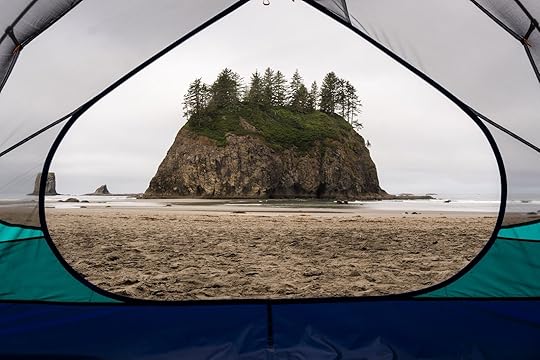
Photo: Jerod Beeson/Shutterstock
Cape Lookout State Park in TillamookFeaturing beachfront campsites for tents and RVs with stunning ocean views and access to hiking trails on the quintessential Oregon coast. Keep an eye out along the cliff band as you might spot a few hang gliders ridge soaring. Oh, and don’t forget to bring your bug spray.
Cost: $23Funny comment: “Easy layout, SUPER close to the beach…which is a double-edged sword. We camped in January and there was a storm that destroyed our stuff; 2.5″ of rain, 70mph winds, flooded the campground trails, flooded our campsite, flooded the road in/out and the raccoons are especially devious here; They figured out how to open our difficult-to-open cooler and dragged food items into the bushes, opened a latched box with shoes and carried the box away and they ran off with our unopened half & half…” -Gary DeBroCornerstone Ranch in BrookingsCornerstone Ranch is an alternative camping site inland of the Instagram famous Harris Beach State Park in Brookings, Oregon. While this camping is not at the beach, like Harris’s, there is almost always a place to pitch your tent, or park your RV, on the 500 acres along the Rogue River.
Cost: $45Helpful comment: “This was a beautiful farm stay! Really enjoyed seeing the animals and being able to buy fresh eggs for breakfast. Love the shade from the old trees. Will stay longer next time. Liked the location to the ocean beaches. Thanks!” -Steve C.Wright’s for Camping at Cannon BeachWant to see Tufted Puffins at Haystack Rock? Well, Wright’s for Camping is a family-owned and operated campground a half mile from the famous Haystack Rocks. With 22 campsites, Wright’s for Camping is a walkable distance to the town and the famous rock, making this family-friendly spot a great stop along the coast.
Cost: $50Helpful comment: “Our family of 4 (2 adults / 2 children) and dog enjoyed the woodsy feel of the campground, which by far was the cleanest campground we’ve ever stayed at… We had site 10 on night 1 and 11 on nights 2 and 3. We booked several months in advance as this place is popular. Campsites are spacious and some are less private than others. I loved 10 and 11…” -Erin PSouth Beach State Park, NewportThe largest campground along the Oregon Coastline, this family-friendly state park boasts 315 total sites. Don’t let the number of sites turn you away because this campground has figured out how to provide a cozy stay for tent campers, yurt lovers, RV goers, and pet lovers alike.
Cost: $24 for tent site, $47 for yurt, $62 for pet-friendly yurtFunny comment: “Ranger locked bathrooms for “cleaning” then sat in the truck watching people walk up and not be able to get in and just watched them leave.” -Cory GageRock Creek CampgroundLocated on the eastern side of Highway One, Rock Creek Campground proved the best of both worlds when camping in Oregon; the forest and the beach. This campground is a short walk to the beach, which can occasionally have good surf but is typically known for the tide pools.
Cost: $24Helpful comment: “This is the best of both environments – mossy big pine forest and stream, just a short walk to a beautiful Oregon coast beach.” -Julie SandersWashington
Photo: Emily Marie Wilson/Shutterstock
Cape Disappointment State Park in IlwacoA wonderful escape from the city, this coastal camping offers lighthouse access and ample trails to wander. Make sure to hike to Bell’s Viewpoint, this will grant you a stellar view of the Lighthouse at sunset.
Cost: $27 to $37.00Punny comment: “Definitely did not a disappoint.” -Vee KKalaloch Campground in Olympic National ParkKalaloch offers stunning views right from your tent in Olympic National Park. Make sure you pay for your park entrance fee as well to avoid a ticket. The best part of this campground is the walkability to the tide pools and trail system within the national park.
Cost: $24Helpful comment: “What a beautiful place. We arrived at 4PM on a weekday in May. No oceanfront sites available, but we stayed on D23 and it was great! Right beside the oceanfront. Honestly, alot of ocean sites aren’t great for a tent. Our site was huge, we placed our tent in a little nook. The ocean drowned out the highway. Lovely walk on the beach… Watch out for the hungry ravens.” -Meg PillMoran State Park on Orcas IslandPut your car on the ferry, or begin a sea kayaking adventure, and land yourself a campsite at Moran State Park for beach camping on Orcas Island. The surrounding area has waterfalls, the ocean, hiking trails, and best of all, it is kid-friendly. So, bring your whole family.
Cost: $10Helpful comment: “Went to Orcas for the day with the wife and 9 yr old daughter and ended up in Moran State Park. Did the Cascade Lake Loop, absolutely gorgeous and perfect hike for the kiddo, just under 3 miles, not much elevation and beautiful views of the lake almost all the way around.” -Kevin StarDeception Pass State Park in Oak HarborDeception Pass is known for its beachside campsites with stunning views of the Deception Pass Bridge. On a sunny evening, the bridge glows in the golden light and is a favorite photo location among visitors and locals.
Cost: $27 to $37Helpful comment: “The drive here is beautiful and the views from the bridge are something worth stopping and enjoying. I was here on this trip in the morning, but could only imagine a sunset view from the bridge as the sun disappeared into the Pacific Ocean. There are two bridges and a little pull out and observatory in between the two bridges.” -Edwin RushtonFort Worden State Park in Port TownsendThis historical landmark hosts two campgrounds serving backpackers, car campers, and RVs. This multi-purpose camping area is centered around Fort Worden, founded in the 1890s as one of the three strategic defenses for the Puget Sound. So, camping here is like a blast into the past.
Cost: $12 primitive campsite, $27 to $37 standard campsiteHelpful comment: “Hit and miss depending on what you’re going there for. Beautiful setting, the beaches, lighthouse, park, stunning views and walks. Good camping, but the cottages and buildings are in pretty rough shape…” -Tree of No Return

Bird Lovers Can Now Go on Cruises Organized by the National Audubon Society
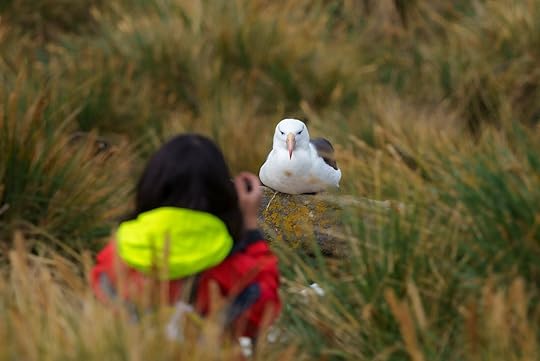
For some, cruising is about relaxing by the pool while taking full advantage of their drinks package. For others, it’s more about the excellent food served on board. For others still, a cruise is about what you see along the way: scenery and wildlife. And if you’re one of those cruisers, there are brand new sailings that should be right up your alley. Expedition cruise line HX (Hurtigruten Expeditions) is partnering with the National Audubon Society to offer bird-watching cruises known as Audubon Voyages.
HX and Audubon are a match made in heaven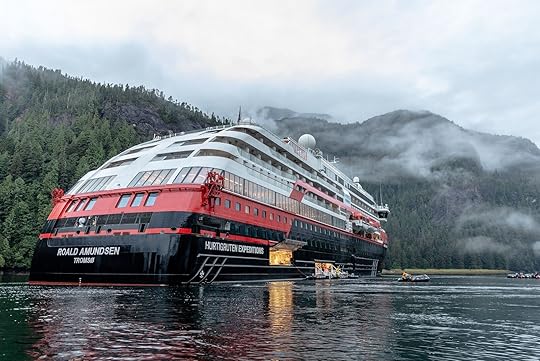
Photo: HX
HX is the world’s largest and leading expedition cruise line, sailing to 250 destinations in more than 30 countries from pole to pole. It is also a leader in sustainable cruising. For example, in 2018, HX banned non-essential single-use plastic (including plastic water bottles). Perhaps more significantly, HX operates two hybrid-powered expedition ships, the MS Roald Amundsen and the MS Fridtjof Nansen, both of which emit 20 percent less carbon dioxide than other cruise ships of the same size.
The National Audubon Society is a non-profit environmental organization dedicated to conservation of birds and their habitats since 1905.
“Audubon’s conservation mission aligns well with the hands-on and science-enriched operations of HX,” says Dr. Chad Wilsey, chief scientist for the National Audubon Society in a press release. “HX employs industry-leading efforts in ecofriendly practices and a commitment to conservation across all their itineraries, including important support for community science activities onboard. Through our partnership, we hope to engage more people in the urgent fight to protect birds and the places they need.”
Audubon VoyagesAudubon Voyages will consist of 10 sailings and five different itineraries, including to Alaska, Antarctica, and the Galapagos Islands.
Audubon Voyages currently available for booking include:
Galápagos Islands Cruise | Nine of the Best Isles, starting at $9,149In-depth Antarctica & Patagonia Expedition, starting at $14,973In Darwin’s Footsteps, starting at $7,476Antarctica & Falkland Expedition, starting at $9,547Alaska & British Columbia | Inside Passage, Bears and Aleutian Islands, starting at $8,648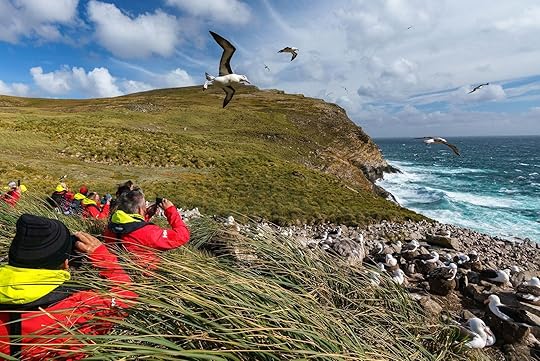
Photo: HX
All Audubon Voyages will have a trained ornithologist or a team of local naturalist guides on board that will take guests through a variety of ecosystems to see diverse and rare bird species.
Audubon Voyages are not reserved for ornithologists or serious birders, amateur twitchers and those who simply take joy in seeing animals in their natural habitats are most welcome. That said, if you’re a Audubon members, it might help. Members save 10 percent on Audubon Voyages with HX. Becoming an Audubon member costs as little as a $50 one-time donation of a $20 monthly gift. 
The ‘Drink Tahoe Tap’ Campaign Makes It Easy to Avoid Plastic in Lake Tahoe
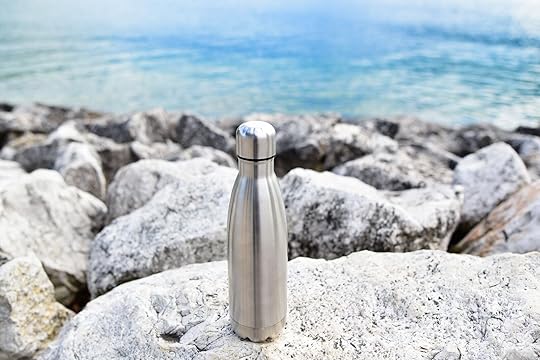
People in the US are extremely lucky when it comes to water, with nearly every state and city in the country having tap water that’s perfectly safe to drink right out of the faucet. But despite that, Americans are some of the biggest consumer of bottled water, spending more than $80 billion on bottled water each year. That averages to each person buying the equivalent of 192 liters of water per person.
Unfortunately, that translates into a devastating amount of plastic waste. Americans buy an average of 50 billion single-use water bottles per year, averaging to 13 bottles per month per person in the US. Producing plastic releases greenhouses gases that contribute to climate change, and the bottles primarily end up in landfills, where they take centuries to decompose. Worse is when these bottles end up directly in waterways, or breakdown into microplastics that move into waterways around the world. The impacts of microplastics are just starting to be understood, but it’s likely they lead to animal death and disorders, and leach chemicals into the ground and air.
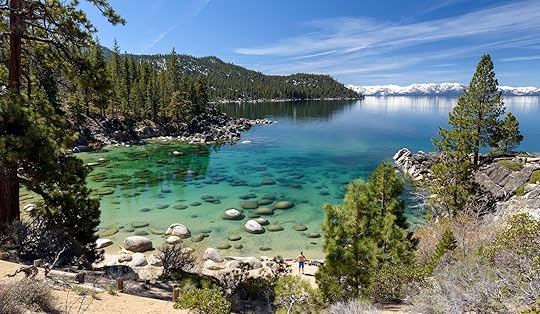
Photo: Tommy Larey/Shutterstock
In Lake Tahoe, split between Nevada and California, area leaders have already banned single-use plastic bottles in towns around the lake. But they took it even one step further, and created a program to make visitors to the popular tourist towns aware that they don’t need bottled water. Tahoe-area water is “99.994 percent pure,” according to the National Rural Water Association, which makes it almost the same as much of the water bottled in the US.
The campaign, called “Drink Tahoe Tap,” aims to remind visitors that Lake Tahoe’s tap water is some of the best in the country. And visitors with their own water bottles have no excuse not to try it (and no excuse for getting dehydrated), since a collective program installed 63 public and free fill-up stations at area businesses and attractions around the lake. Thanks to a funding effort, area businesses could get grants of up to $500 to install their own airport-style water bottle fill-up stations.
“Drink Tahoe Tap is an environmental stewardship campaign that encourages people to make choices that will create less plastic waste,” says Noah Shapiro, Program & Outreach Coordinator for The Tahoe Fund. “[It’s been] identified as one of Take Care Tahoe’s core initiatives because it applies to everyone in Tahoe, all year long.”
Take Care Tahoe is a collection of initiatives supported by area partners ranging from the US Forest Service to area ski resorts and chambers of commerce. Initiatives as part of Take Care Tahoe include not just “Drink Tahoe Tap,” but also campaigns to encourage visitors to be bear aware, efforts to remind locals and visitors alike to keep rivers clean, and education to help keep invasive species out of Tahoe-area waterways. To some degrees, Tahoe is a victim of its own popularity, with many local residents struggling with the influx of tourists — an issue seen in mountain towns around the country — and the initiatives aim to lessen the impact of recreators around the lake.
View this post on Instagram
A post shared by Tahoe Fund (@tahoefund)
Anyone can use any bottle at the refill stations, but Tahoe-area Raley’s grocery stores are selling “Drink Tahoe Tap” bottles at area stores for $20, with a small amount of the proceeds going back to the Tahoe Fund. But if you’re visiting South Lake Tahoe, you may be able to get a reusable water entirely for free. “In South Lake Tahoe, Visit Lake Tahoe has been distributing free water bottles with the Drink Tahoe Tap logo on them to spread awareness around the single use plastic bottle ban that went into effect in April 2024,” says Shapiro. 
Sober Cruises Are Rare, but This Sober Cruise Expert Knows Foregoing Alcohol Can Be Just as Fun

The only sober cruise line you’ll find right now is AROYA Cruises, and it’s not even operating yet. Saudi Arabia’s one and only cruise line is scheduled to sail for the first time in December 2024. For now, sober travelers don’t have a choice: If they want to cruise, they must do it along with the drinkers. And for some, it’s a challenge.
I am a cruiser and a non-drinker. I’m not a teetotaler (I have been known to enjoy a cocktail on special occasions) and neither am I a recovering alcoholic — I just don’t care for alcohol and its effects on me. Therefore, being among people who drink doesn’t really bother me, as long as it’s not an extreme, binging situation. That’s lucky for me since cruising usually means being in the presence of people who overindulge in that regard.
A cruiser who purchases a drinks package with alcohol needs to have about six to seven drinks per day to break even. Often, they can have up to 15 alcoholic drinks per day with their package. With that kind of math, of course, cruisers tend to drink a lot.
Kyle Valenta, senior SEO editor at Cruise Critic, is a budding cruiser and a sober traveler. While he had gone on only five cruises when we spoke, he has a distinct travel perspective.
“Part of the reason I came on board [at Cruise Critic] was to shine a light on the rookie cruiser’s experience, especially as a queer traveler who abstains from alcohol,” Valenta says.
I talked with Valenta at length about his experience cruising while sober and the advice he would give non-drinkers who want to travel the world by cruise ships.
This interview has been edited for length and clarity.
Matador: When and why did you become a sober traveler?Kyle Valenta: My personal sobriety journey started out of necessity — by 2013, I’d survived four medical detoxes over the course of two years due to potentially fatal alcohol withdrawal after severe bouts of binge drinking.
Since then, I’ve abstained from alcohol for nearly 10 years. Over that time I’ve had both hard and easy times while navigating alcohol-centric experiences. Of course, that includes travel, which I’d already been hooked on for years by the time I stopped drinking. Once I quit drinking, though, travel quickly became my go-to dopamine hit. After 2013, I began traveling far more, and began my full-time career in travel media in 2015.
You recently wrote a piece that lists tips for sober travelers who want to cruise. Do you personally find it complicated to be a sober cruiser?I’m lucky enough to have over a decade of sober travel under my belt. While traveling without alcohol is easy and almost second nature to me now, it wasn’t always this way, and I’ve spent plenty of time in destinations where alcohol can be a prominent part of the experience.
For instance, when I was in Madrid for the first time in 2015, I thought I’d explore the tapas bars my first night in town, but couldn’t bring myself to do it. Could I have done it sober? Probably. But I would have felt too conscious of myself at that point in my alcohol-abstinence journey, and didn’t actually know if my sparkling water qualified me for the free pinchos they often give away with beer, wine, and cocktails.
When I began taking cruises, I definitely had cruise stereotypes in mind — that typical idea that everyone will be drunk all the time. That quickly changed with my first cruise aboard Royal Caribbean Mariner of the Seas. I saw that there was an array of things to see and do both on the ship and off, and that there were seemingly hundreds of other people who weren’t drunk at all hours of the day either. The great gym onboard, the high-speed waterslides at Royal Caribbean’s Perfect Day at CocoCay, and a friendly group of Disney World employees that I met only made it easier, to be honest.
What cruise lines would you say are best suited for sober travelers?It’s not really fair to say one cruise line is better suited for sober travelers than another, though some cruises to some destinations on some cruise lines tend to be a little more booze-centric. This is really no different than all-inclusive resorts on land in places like Cancun or Cabo San Lucas, which tend to be a bit rowdier and fueled by booze, but where you can also find more relaxed, less alcohol-centered experiences.
It’s really on the sober cruiser to do their research to make sure a cruise offers enough of what you want to do to really enjoy your vacation, regardless of the cruise line. This can include researching mocktails onboard — nearly every line can at least crank out a virgin piña colada or mojito — but also check out onboard entertainment and activities, features like the spa and gym, as well as shore excursions on offer.
Virgin Voyages offers some of the most dynamic and interactive entertainment at sea, as well as all-day programming that goes beyond shopping presentations and quiz shows. They also offer creative mocktails in every restaurant onboard — likewise for Cunard. Royal Caribbean, who some might think of as a party cruise line, has a huge array of programming and entertainment, plus countless places to unwind away from the bar on their Oasis- and Icon-Class ships. The water show on Wonder of the Seas has enough octane to supplant any rush a cocktail might give you.
Would you say that luxury cruise lines are better suited to sober travelers than others?Almost any kind of cruise can be more alcohol centered, so sober travelers really need to do their research — particularly focusing on reviews by previous cruisers, like in Cruise Critic’s community forums. Honestly, there are luxury lines with Caribbean itineraries (and elsewhere) that definitely have a more alcohol-fueled vibe — at Cruise Critic, we’ve certainly seen that vibe even on some luxe sailing ships in the region (as opposed to traditional cruise ships). Other lines, like Silversea, Oceania, and others, do have a more chilled-out, quiet reputation that reflect cruises with less of an emphasis on drinking.
Expedition cruises are an even more reliable way to get away from the alcohol-centric experiences on some mainstream cruise lines. Check out offerings from Uncruise, HX (Hurtigruten), Seabourn, or Lindblad, which are often so packed with adventure that most passengers fall into bed early at night. In other words, the rush of the expedition itself supplants the need for alcohol for even non-sober travelers.
What, in your opinion as a sober cruiser, could cruise lines do to better include sober travelers?Most 12-step groups and addiction therapy teach the sober person that personal accountability is a critical part of the process for those who are sober. That means that those who abstain from alcohol don’t necessarily expect that an event, destination, or vacation will cater to their sobriety.
However, nearly every cruise offers 12-step meetings onboard as part of their regular programming. If you’re more comfortable with your home group or a group that’s not based on the ship, many lines now have powerful WiFi that can make it easy to join a group on land (or connect with your therapist).
My only thought is that while all cruise lines serve mocktails (even though they aren’t always on the menus), many could be more creative with alcohol-free cocktails and should shine more of a spotlight on them in their restaurants and bars. In the same vein, diversifying wellness beyond spa treatments would also be great, as many sober people rely on these to maintain their sobriety.
What are the top three pieces of advice you would give a person who does not drink and would like to go on a cruise?Be honest with yourself about where you are in your recovery journey: Nearly any social setting involving alcohol can trigger cravings and other uncomfortable feelings for newly sober people. This was the case for me in my first couple years of alcohol abstinence. However, if you have a robust support network and practiced and proven tactics that have kept you sober in those situations, it can be far easier to avoid a potential relapse while on a cruise or vacation. That often comes with time.Do your research: This is true for anyone who cruises, but it’s critical for sober cruisers. Forums and online groups provide advice and reviews from plenty of alcohol-abstinent cruisers. These are likely your most honest, up-to-the-minute source of intel on how alcohol-soaked the cruise you’re considering is likely to be. Additionally, research what you can do onboard, what you can do on land, and what kinds of less alcohol-centric spaces are offered on your cruise.Make a plan, be accountable to someone, and play the tape through to the end: Three powerful tools for sober people that apply on a cruise as well.Planning provides structure to avoid endless stretches of free time, which can trigger sober people or open them up to making more impulsive decisions. Staying accountable to someone also helps. Take lots of pictures and send them to a friend, family member, sponsor, or other trusted person. Staying in touch about your cruise — the good and bad things — with someone meaningful to you can help you from staying true to your goal of staying sober, whether you’re feeling a craving, took an amazing shore excursion, or enjoyed a long nap on the beach. Finally, playing the tape through to the end is a tried-and-true recovery tactic. You can do this before departing by imagining the specific triggering situations you might be in on a cruise, and honestly visualizing each step of how you might navigate cravings, triggers, and so on. While on the ship, use this tactic before situations where temptation might be higher: near the pool bar, in the nightclub, during typical happy hour times, and so on. More like thisTravelA New Data Analysis Shows the 40 Best Countries for Sober Travel
More like thisTravelA New Data Analysis Shows the 40 Best Countries for Sober Travel
July 16, 2024
This Airline Just Launched New Routes to Beach Destinations, Starting at $39
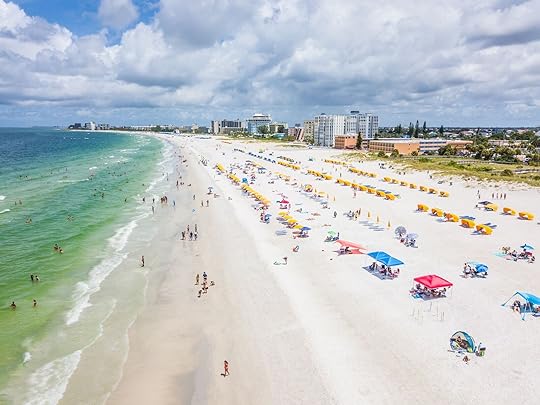
Sure, it may be summer now, but when the temperatures start dropping in most of the US around November, those hot, sunny days are going to start sounding pretty good again. But thanks to new cheap flights launching from Allegiant Airlines, if you have $78, you may be able to make a beachy winter getaway come true.
Allegiant announced it will launch nine new routes in November, with one-way rates for some flights starting as low as $39.
From Grand Rapids, MI, to Palm Beach, FL (starting at $69)From Savannah/Hilton Head, GA, to Punta Gorda/Fort Myers, FL (starting at $39)From Savannah/Hilton Head, GA, to St. Pete/Tampa, FL (starting at $39)From Savannah/Hilton Head, GA, to Fort Lauderdale/Miami, FL (starting at $39)From Cincinnati, OH, fly to Orlando, FL (starting at $49)From Fort Lauderdale/Miami, FL, to Savannah, GA (starting at $39)From Fort Lauderdale/Miami, FL, to Newburgh, NY (starting at $69)From Destin-Fort Walton Beach, FL, fly to Flint, MI (starting at $59)From Sarasota/Bradenton, FL, fly to Portsmouth, NH (starting at $69)The new routes begin on November 13 or 14, 2024, but to take advantage of the super-cheap rates, you’ll have to book your flights before July 17, 2024, and travel by February 10, 2025. But if you miss the July cut-off date, it’s likely that flights will still be pretty inexpensive as the routes are brand new. The listed fares include taxes and government fees, but don’t include add-ons like checked bags, carry-on bags, seat selection, early boarding, or food or drink.
Allegiant is considered one of US’s low-cost carriers, and won the title of “” at the 2024 World Airline Awards. It was also ranked as the airline least likely to lose your luggage in 2021. However, it’s also received its share of not-so-great accolades, like being voted the “worst airline in the US” by The Points Guy in 2021. But if you know what you’re signing up for — a cheap, no-frills flight to a mid-sized airport — the prices are a steal. And come December or January, you may not care how budget an airline is, as long as it gets you to somewhere with sunshine and palm trees. 
How Tapooz Travel Makes Customized, Accessible Dream Trips Possible for a Wide Range of Needs

By World Health Organization numbers, one in six people worldwide have a disability. Around the world, the accessible travel industry is working to become more inclusive for people with a wide range of special needs. Myrtle Beach, South Carolina, has created programs for people traveling on the autism spectrum, for example, while Wheel The World specializes in travel planning for people with mobility challenges. Others include Cruise Planners, focused on cruise ships, and Travel For All. Still, accessible travel is a nearly $60 billion market that’s largely untapped, according to the BBC.
Just like any traveler with a specific goal for their trip, there’s no one-size-fits-all formula in accessible travel. That’s particularly true the more specialized the needs are. In many cases, a knowledgable and specialized travel agent who intimately knows the location is the only way to make travel possible and safe.
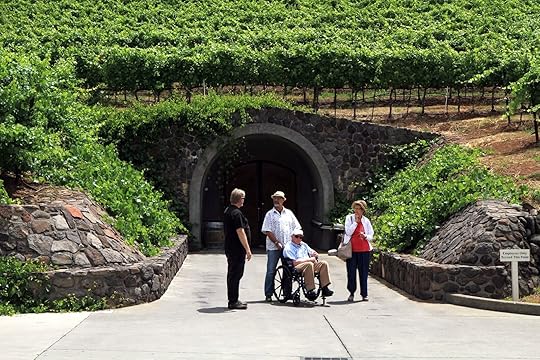
Photo: Tapooz Travel
Tapooz Travel, one of the most recommended and trusted accessible travel companies led by Laurent Roffé and his wife Aïcha Nyström, is fully aware of this and creates individualized itineraries that are need specific and completely custom.
Roffé is French and has been a resident of the Bay Area of California since moving there in the 1990s with Nyström. He specializes in accessible kayaking, while Nyström specializes in accessible skiing for people with visual impairments. Thirteen years ago they created a business plan to offer a small number of accessible excursions — sea kayaking, wine country tours, etc. — around the Bay Area as something to do in retirement.
Fast forward to today, and Tapooz is a full-fledged travel company that’s well recognized for tours in 30 destinations around the world that are custom designed for each traveler’s needs. Tapooz focuses on individual trips, but also facilitates group trips or trips where only part of the group requires assistance — whether that’s traveling with specialized medical gear to a foreign country or creating an itinerary around specific mobility issues.
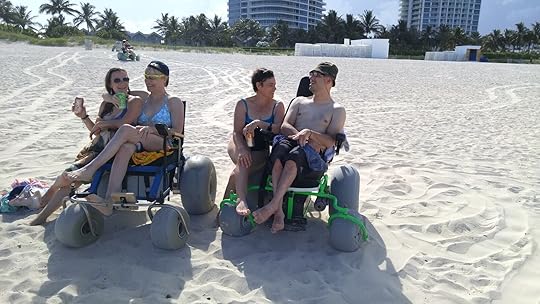
Photo: Tapooz Travel
“Right away when we said that we have an accessible travel company, it’s like the floodgates opened and never closed,” Roffé says over a call. “Very naively, we didn’t know there was such a demand for accessible travel, and that demand became more and more.”
It’s a demand that will only continue to grow as populations age, considering as people get older they naturally need more assistance. Roffé also has a travel accessibility consulting company, Accessio Consulting, focused on business travel, and has a list of other trusted accessible travel planners if it’s decided that a particular trip can’t be done with Tapooz for any reason.
The importance of first-hand vetting in accessible travel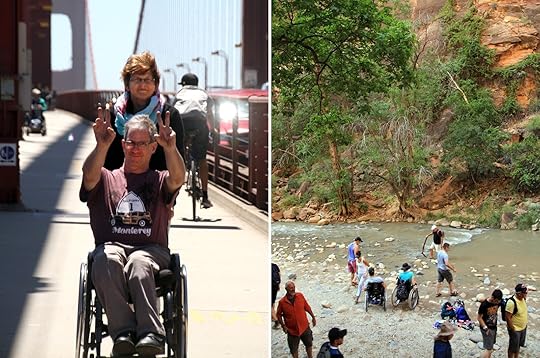
Photo: Tapooz Travel
It’s one thing for a hotel or attraction to state that it follows accessibility guidelines and regulations. Specific details, however, take seeing something first-hand. Tapooz personally vets the entire travel network — from the transportation options, to the hotels, to the equipment onsite, and more — for each destination it offers.
Growth is slower this way, but it’s a key differentiator when choosing an accessible travel company. Only through seeing something for oneself and building one-on-one relationships can a travel company guarantee that traveler needs are met. For Roffé, that meant an early focus on the Bay Area and France, and then expanding through connections and his own travels to Canada, India, Portugal, Scandinavia, and Morocco.
After someone reaches out to Tapooz, trip planning starts with a questionnaire and a Zoom call about what type of experience the guest wants to have on a trip. Maybe it’s cultural and centered around museums and music, or perhaps food-focused or a wine region tour. For others, adventure and high thrills are top of mind, like adaptive surfing in Santa Cruz or skydiving over Yosemite. From there, the conversation shifts to specific needs to make sure Tapooz can offer the right tools, people, and equipment.
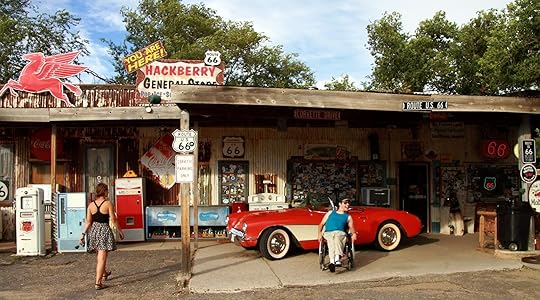
Photo: Tapooz Travel
A loose draft of a travel plan comes from those conversations, which is then refined with the guest to cover any questions and formulate back up plans. It can take as little as a week to create an itinerary from start to finish, or as long as a few months depending on the urgency of travel. The final result of the planning is a complete custom guide with every detail needed, from types of vehicles, to the names of drivers and emergency contacts, to equipment that’ll be delivered to a room at what time, and more.
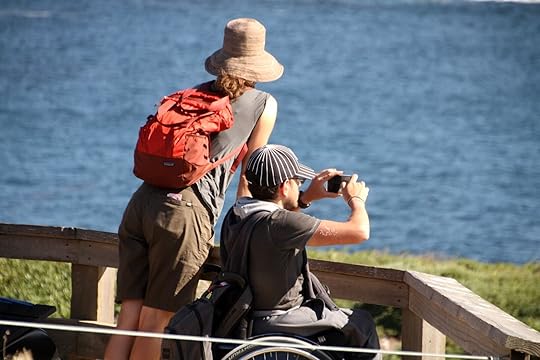
Photo: Tapooz Travel
“Myself, my spouse, my team, we’re very much part of this community,” Roffé says. “So we have a special sensibility to even the terminology that we’re using and the way that we talk with people.”
Mobility is only one aspect that needs to be covered. Others include how well a person can communicate verbally, for example, or access to certain types of doctors or medical equipment. Entirely seperate acommodation needs for a travel companion must also be considered.
“We’re very respectful, and we ask the hard questions when they need to be asked, because it goes into equipment or another need,” Roffé says. “A lot of that has to do with the guests feeling very comfortable sharing with us.”
The need for specifics guided by an agent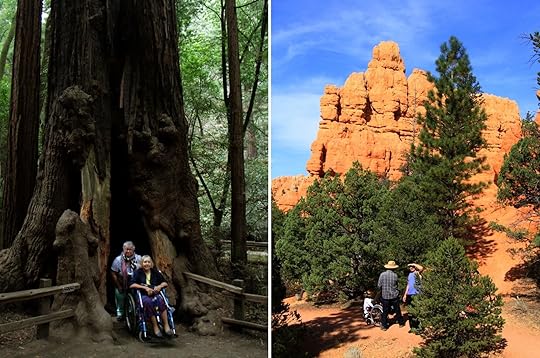
Photo: Tapooz Travel
The individualized nature of accessible travel and the need to work through a dedicated travel agent inherently raises the cost of each trip. AI travel tools, like Matador Network’s GuideGeek, are getting better every day at creating travel plans tailored to a traveler’s interests. AI has not, however, reached a point where it can answer the most specific needs, like a particular hotel bathroom’s accessibility or the height of the beds or the varied surfaces on the sidewalk when you exit a building.
Roffé gives an example of someone who uses a wheelchair who wanted to go down Bryce Canyon. In addition to the exact tested route, Tapooz worked with providers in the area for the exact types of straps needed to get the guest’s specific wheelchair back to the top.
The costs that go into an accessible travel agent’s fee go into providing the granular details “that AI cannot address all of — right now,” Roffé says.
Travel risk tolerance and the importance of being prepared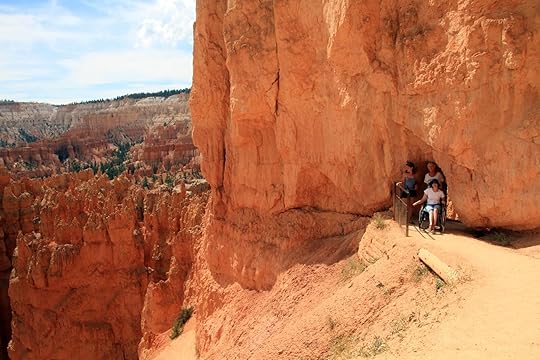
Photo: Tapooz Travel
It’s not as easy for accessible travel itineraries to shift, “so we build a lot of redundancy, a lot of plan B, a lot of ‘what if’ scenarios,” Roffé says. The human connection to people at the hotels and experiences is important as well, to ensure there’s an immediate on-the-ground contact who can responsibly handle any issues that come up.
When a Tapooz traveler had a head injury on their scooter in Scandinavia, for example, Tapooz was able to immediately have a team member meet with them, find a doctor in a remote area, find a hotel that could install a special bed, and help deal with the insurance claim requirements.
Anyone who has traveled knows that things happen and there’s a certain level of flexibility needed. With accessible travel, that could mean a lost battery or broken wheelchair. It can also mean a medical emergency. It’s important to match the risk tolerance with each specific guest, and to have all risks clearly communicated ahead of time.
Tapooz doesn’t offer travel insurance directly, though all of their guests use a travel insurance company and Tapooz is happy to make recommendations.
This story was inspired by a reader question solicited through the Matador newsletter. Have a travel question you’d like the Matador Network team to look into? Send us an email at nick.h@matadornetwork.com. 
North Dakota’s Sunflower Trail Will Brighten Up Your Summer

France has lavender, The Netherlands has tulips, and North Dakota has sunflowers. The midwestern state, the birth place of the Sunflower seed and one of the top producers of sunflowers in the country, even celebrates National Sunflower Day on the first Saturday in August. The date is chosen to correspond to peak blooming time — sunflowers usually flower between late July and mid-August.
During blooming season, travelers to North Dakota can enjoy the magnificent spectacle of giant fields full of the bright and joyful flowers by following the state’s SunFlower Trail. The 2024 Sunflower Trail consists of 13 fields spread out throughout the state which you can visit for free.
“North Dakota Tourism often receives calls from soon-to-be fiances wanting to know where to find sunflower fields as a location to pop the question. The best time to do so varies, as their peak colors depend on planting and weather, but usually late July to early and mid-August,” North Dakota Tourism explains on its website.
The map above includes all 13 sunflower fields. Upon clicking on one of the fields, you can obtain the GPS coordinates to get there easily. North Dakota Tourism has also included directions for every sunflower field on its website.
Around some of the fields, visitors will notice mailboxes featuring the message “ND Be Legendary”. They contain sunflower seeds which are free to take.
The Sunflower Trail is different every year as farmers rotate the crops they plant in each field, so don’t use the map above if you’re planning a road trip along North Dakota’s Sunflower Trail in 2025 or 2026.
No matter which of the 13 fields you opt to visit (maybe all of them), just make sure to respect the location by not entering the fields without the owner’s permission — even if you really, really want a photo among the blooms. Also, don’t go check out a field while it’s being sprayed with insecticide or herbicide — look up at the sky before you go and if you see a spray plane, stay away.

Photo: ND Tourism
Before you set off on the Sunflower Trail, get your facts straight about this beautiful crop: Sunflowers are five to six foot tall on average; one sunflower head can contain up to 2,000 seeds, sunflowers heads follow the path of the sun throughout the day, from east to west; and sunflowers are the national flower of Ukraine. 
Matador Network's Blog
- Matador Network's profile
- 6 followers



